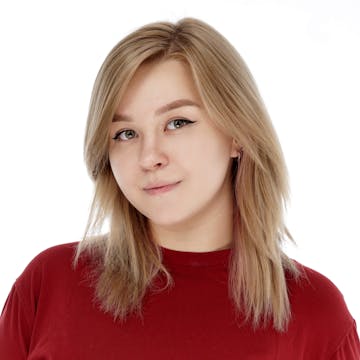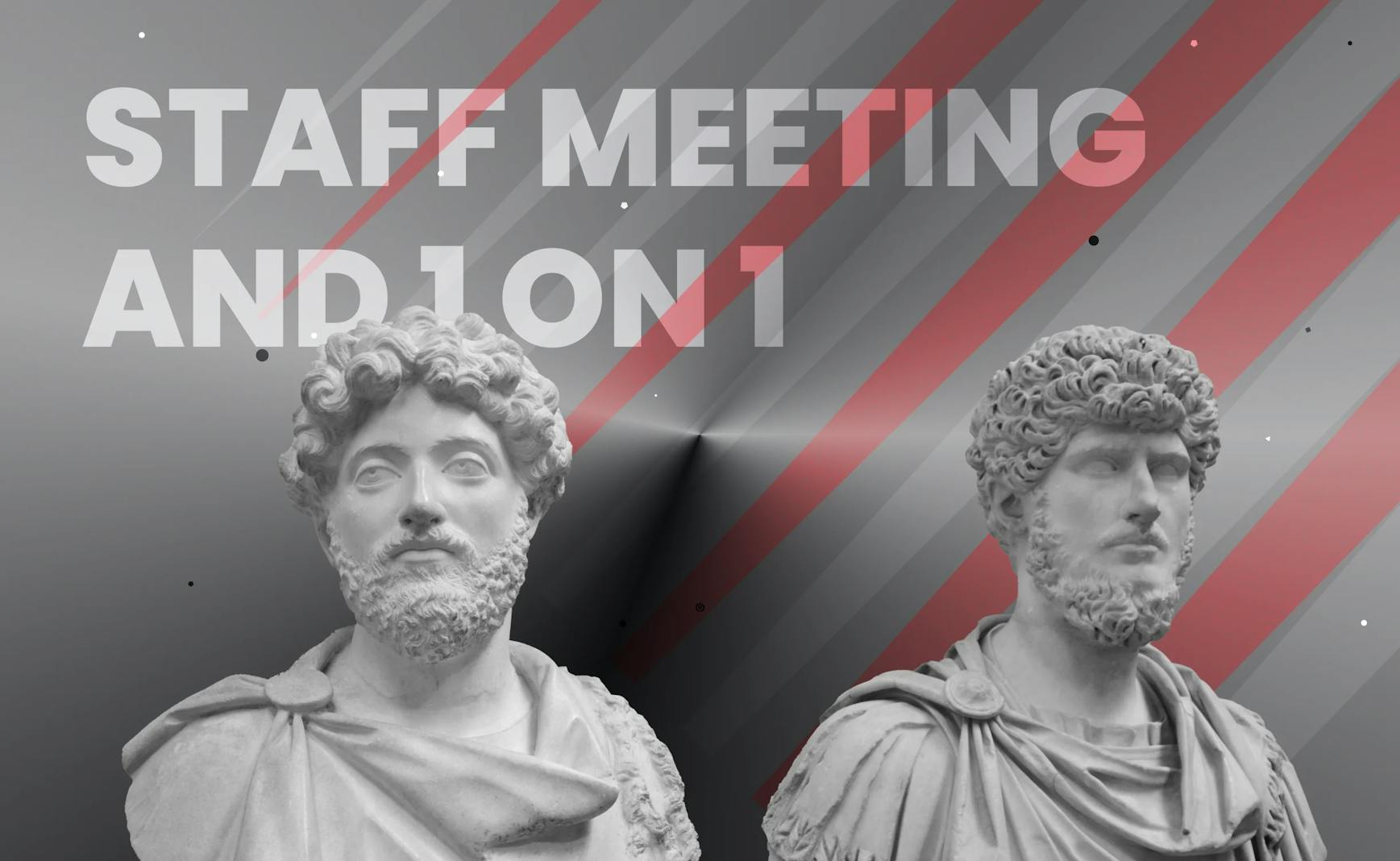Managing a team of on-site developers isn't an easy task. Add in a large team working remotely, and it becomes more complicated.
As a remote-first company, Mad Devs needed to build efficient communication practices to ensure every team member performs at their best and teams deliver value to our clients, from small startups to complex enterprise solutions. The result is a system that optimizes communication across teams and the company.
Daily stand-ups to track performance and difficulties
The concept of a stand-up meeting is to gather everyone together while standing to keep the meeting short. These are a helpful way to keep teams and managers aware of a project's current status and the plans of individual team members, and learn of any issues anyone has encountered. In-office teams with fixed schedules can conduct these meetings easily; however, companies such as Mad Devs can't organize meetings simultaneously every day when team members work on flexible schedules in different time zones.
To adapt to this reality, Mad Devs' leaders changed the format of these reports and introduced an instrument that automated stand-ups. Employees could submit their check-ins via Slack, Telegram, or MS Teams at the start of their working day in their time zone, based on the team's deadline. If someone missed the deadline, the bot will remind them to submit their stand-up. Asynchronous text-based stand-ups allowed teams to understand what everyone was doing while not distracting them from important work. Over time, our developers grew this tool into a fully AI-powered platform, Enji.ai. Our team members continue to submit text-based check-ins via their preferred messengers and can also do so in their Enji profiles. Enji uses the input from stand-ups to analyze performance and provide insights to managers and stakeholders.
The standard format of a stand-up at Mad Devs is this:
- What did you do yesterday?
- Did you achieve your goals?
- What are you planning to do today?
- Do you have any blockers that may affect your work?
- What makes you happy today? (Optional)

All answers are collected in a single channel that the team can review and leave comments. For example, team members can tag each other in their stand-ups to bring attention to particular tasks or requests. This creates transparency and ensures everyone is aware of the team's priorities and any issues that may create roadblocks to reaching goals. Likewise, stand-ups help stakeholders understand a project's progress, which is helpful when clients need answers quickly.
Virtual team meetings for efficient communication
Regular asynchronous stand-ups support effective communication at Mad Devs in another way: they reduce the need for video calls and status updates. In distributed teams, these calls are a challenge to organize and take time away from the work employees want to perform. Instead, managers review text stand-ups and arrange calls that focus on specific issues. Stand-ups provide a structure for important discussions that allow teams to devote more attention to strategy instead of minor details.
Mad Devs uses two platforms for virtual meetings:
- Google Meets: Easy to organize meetings through Google Calendar and arrange repetitive calls if necessary.
- Discord: Not just for gamers. Discord is great for working and discussing at the same time, especially when working on collaborative tasks. It's also an option for spontaneous meetings.
Our teams follow several best practices to ensure that every call is meaningful and doesn't waste the time of participants:
- Plan ahead: When possible, schedule regular meetings that occur on the same day and at the same time to make them part of everyone's routine.
- Set the agenda: Set the topic ahead of time to give team members a chance to prepare.
- Speaking rules: To ensure everyone has a chance to speak, the Mad Devs team usually has participants mute their microphones when not speaking and use the hand raise button in Google Meets to indicate if they want to add something to the conversation.
This flow facilitates our online meetings, especially if there are many participants and a client has been invited. It's even more important in these situations to demonstrate our professionalism and give customers a chance to voice their opinions about a project and ask questions.
Effective 1-on-1 meetings to develop trust
Given all the tasks involved in a project, our teams need to focus on work, and fewer video calls help keep everyone on task. However, less of this kind of communication can result in a feeling of isolation. To provide support to every team member, Mad Devs encourages managers to arrange 1-on-1 meetings. These are a chance for team members to share their issues and get assistance from their colleagues, which is then turned into feedback that the company can use to improve its processes and culture. Here are the best practices we follow:
- Be consistent: 1-on-1 meetings are organized regularly, typically once a month.
- Listen first: Managers listen to what team members want to talk about and respond appropriately. This could be about a project, colleagues, tasks, or their professional growth. Some people want to share their issues beyond work, which is also fine.
- Be calm: 1-on-1s are not interrogations. If a team member doesn't want to share about a particular topic, we don't force them to speak.
- Take notes: Managers take notes during the meeting to ensure accountability for what was discussed and as a means of checking progress during the next 1-on-1.
These meetings can involve discussions of various topics, and managers need to be aware that they may not know what to do or say. In these cases, it's best to admit the fact and ask if the team member would agree to reaching out to a colleague with experience in that area.
We find that 1-on-1s that follow these guidelines create an atmosphere of trust and commitment to delivering value to each other and clients. When people understand that they can share their concerns, it leads to a high-performance culture based on transparency.
6 best practices for effective virtual team communication
Asynchronous stand-ups, focused virtual meetings, and 1-on-1 sessions help Mad Devs create a positive working environment for all team members and ensure that we provide the best service and solutions to our customers. These strategies are useful in themselves; however, there are several ways we support them to optimize our communication strategies.
- Embrace AI tools
Project and Delivery Managers at Mad Devs use the Enji PM Agent to collect data and produce instant reports on individual and team performance, which reduces their workload and allows them to focus on meaningful communication with team members. It also creates opportunities to assess employee performance objectively. - Use project management platforms
Mad Devs uses Jira to manage projects, which allows our distributed teams to organize their workflows regardless of timezone differences. Jira and other platforms help teams avoid unnecessary communication about assignments and task status. - Complete worklogs
Whenever a Mad Devs team member performs an activity, such as editing a text, conducting a call with a client, creating a commit, or doing a merge request, they record their work in a short text called a worklog. This promotes transparency and helps managers understand everyone's contributions to a project. - Leave comments and reactions
These actions may seem unconnected to communication, but they play an important role. Enji collects comments and presents them in reports to show individual activity. Likewise, comments help teams and managers understand a task's status and learn why there may be problems. Comments and reactions to comments serve as objective evidence that managers can use in team meetings and 1-on-1s. - Remove burdensome hierarchy
There are no strict rules about who can communicate with whom at Mad Devs. Junior software developers can contact leadership personnel, and vice versa. An open communication environment allows ideas to be shared and issues to be resolved faster than in a heavily bureaucratized system. - Create clear expectations
Any communication strategy will fail unless all members understand what they need to do. At Mad Devs, everyone knows they must complete stand-ups, and when a meeting is scheduled, they need to attend. The expectations become part of a company's culture, making them habits instead of rules to follow.
Each of these actions delivers positive results to Mad Devs as a company and to our individual employees. A large part of our strategy involves removing unnecessary meetings from our routine and staying up-to-date through automated reports and text-based stand-ups. Through this approach, we remain connected as a team, and everyone feels important, valued, and protected. That means results for customers and professional growth for team members.
Prioritize effective communication
Remote teams offer flexible opportunities for employees, and companies can reap global talent outside typical geographical boundaries, but also present challenges in communication. Through a process of trial and error, Mad Devs developed policies that encourage transparency across the organization, from text-based communication to video calls. It means adapting methods to the realities of our work environment.






















